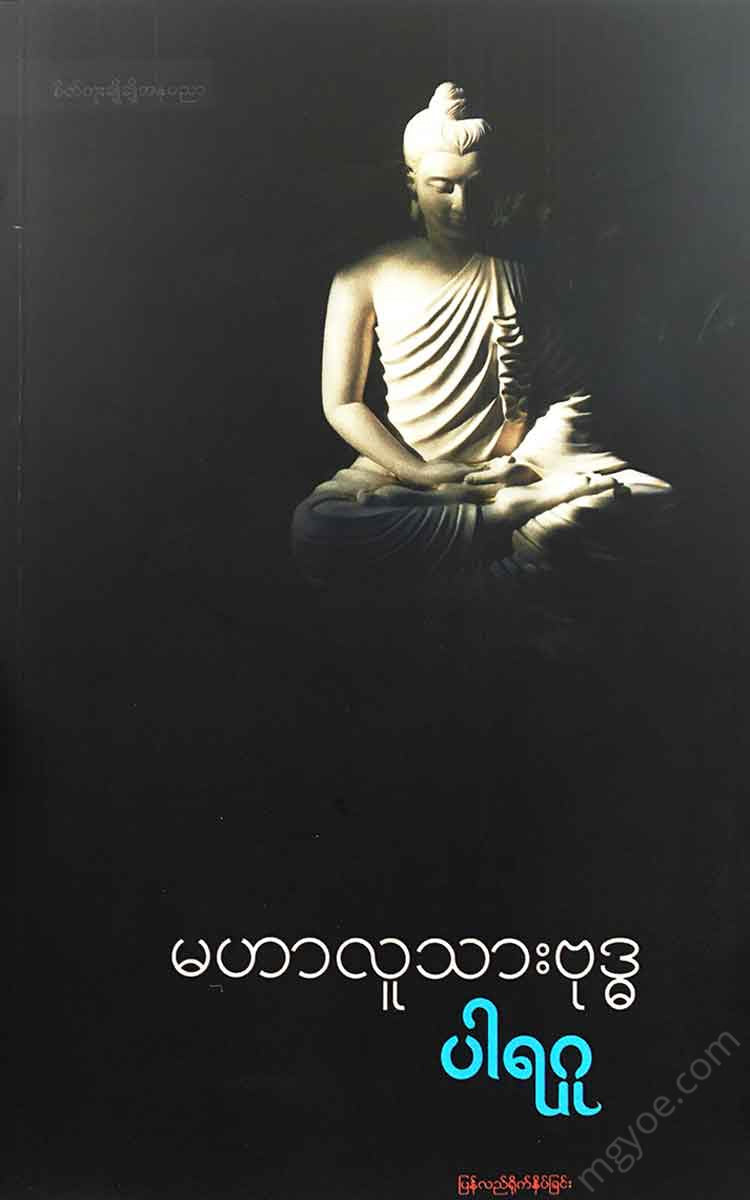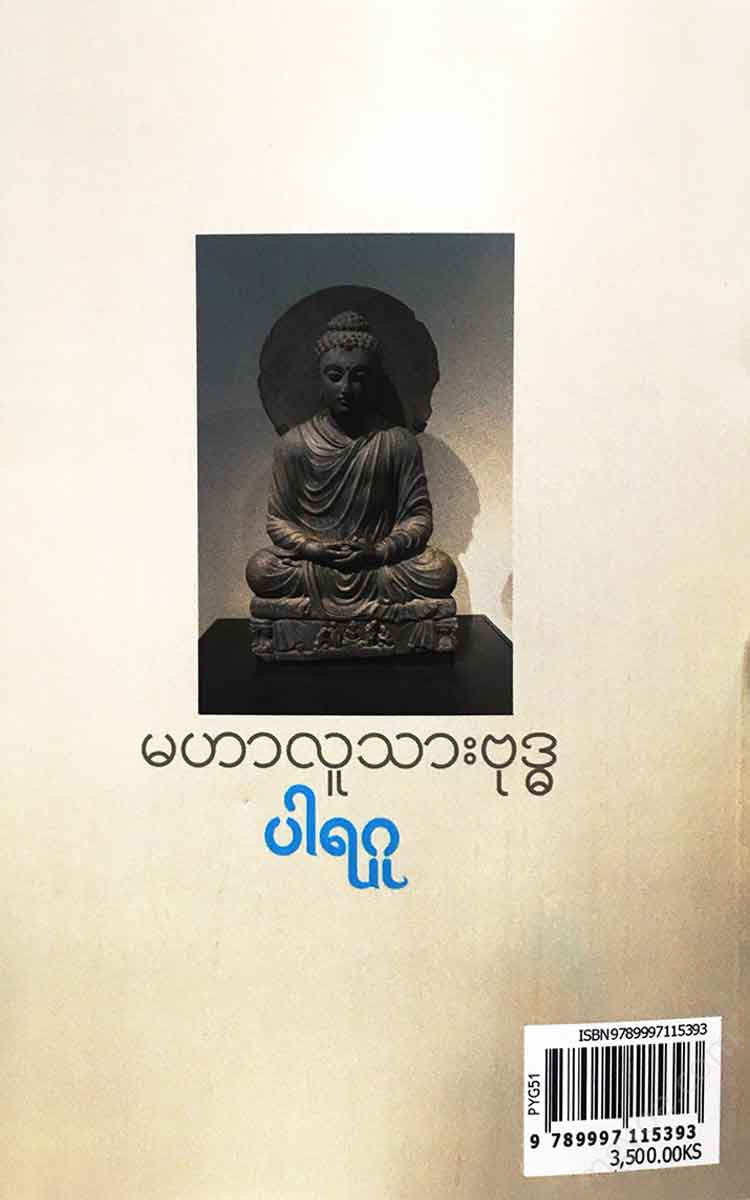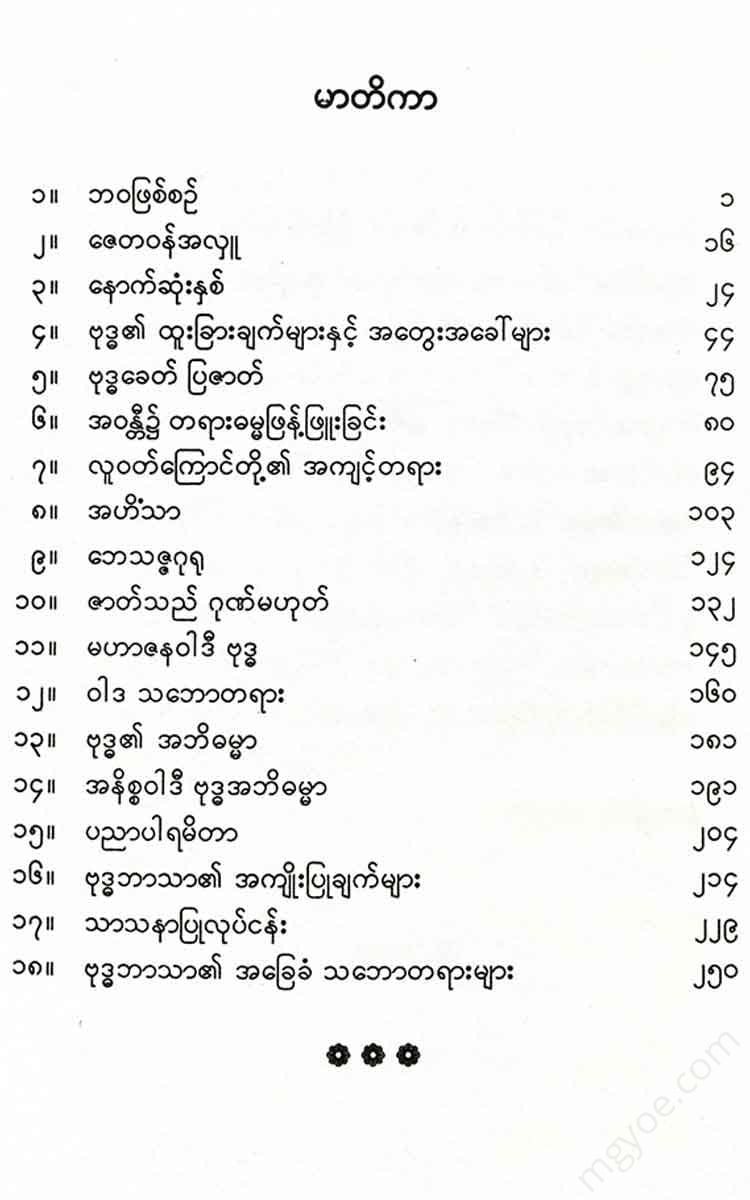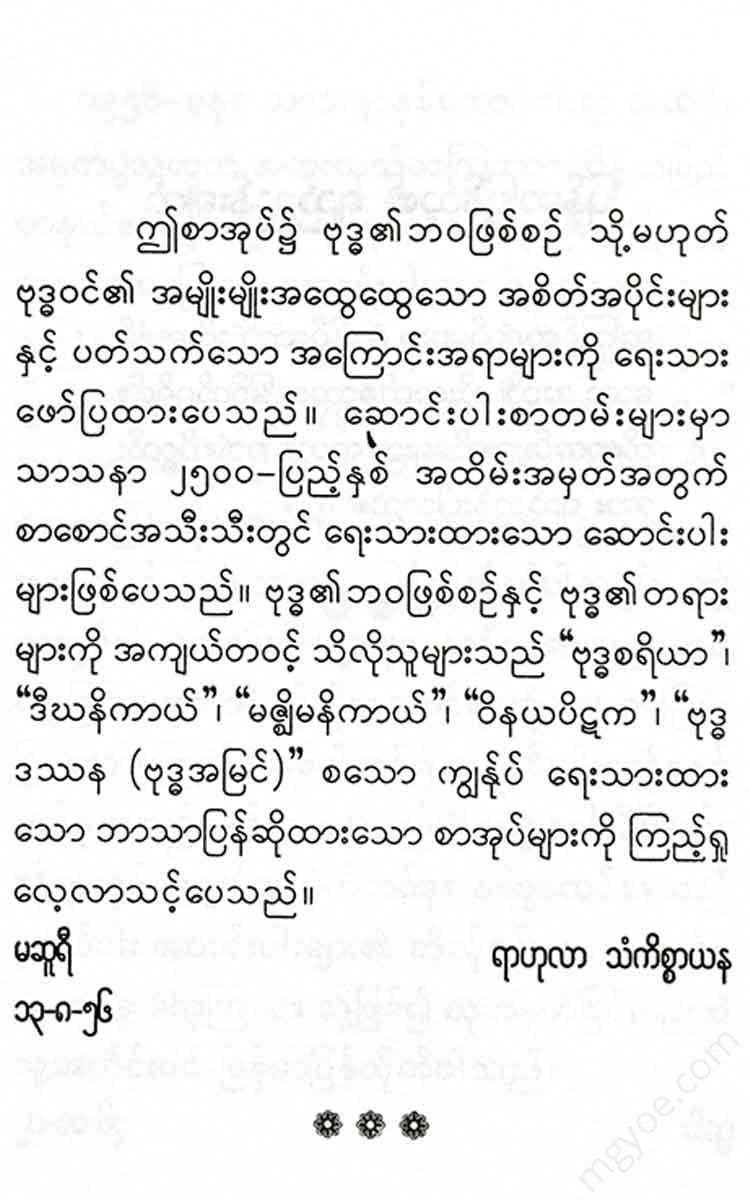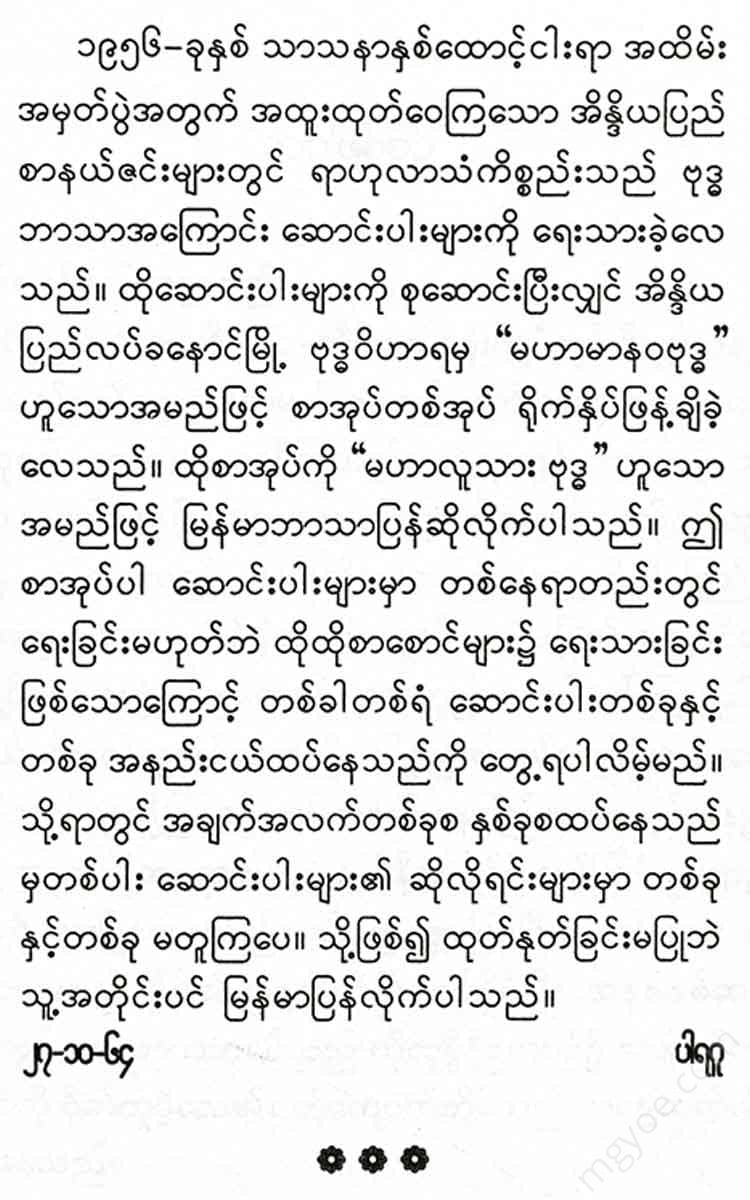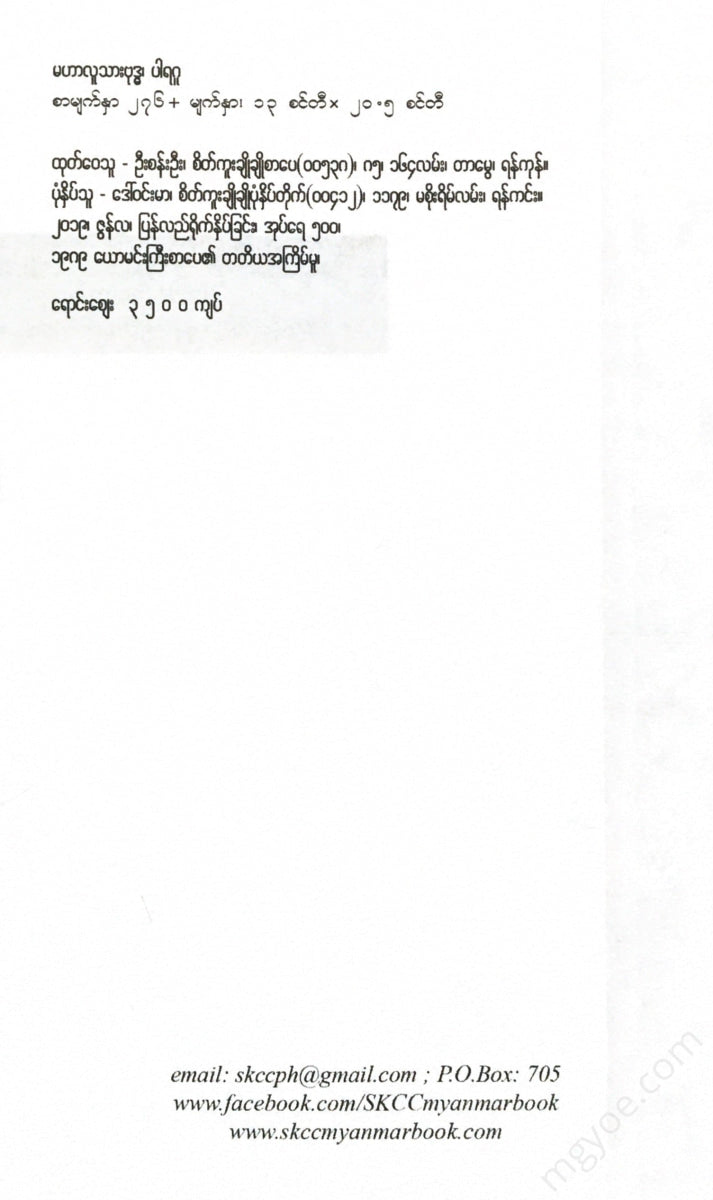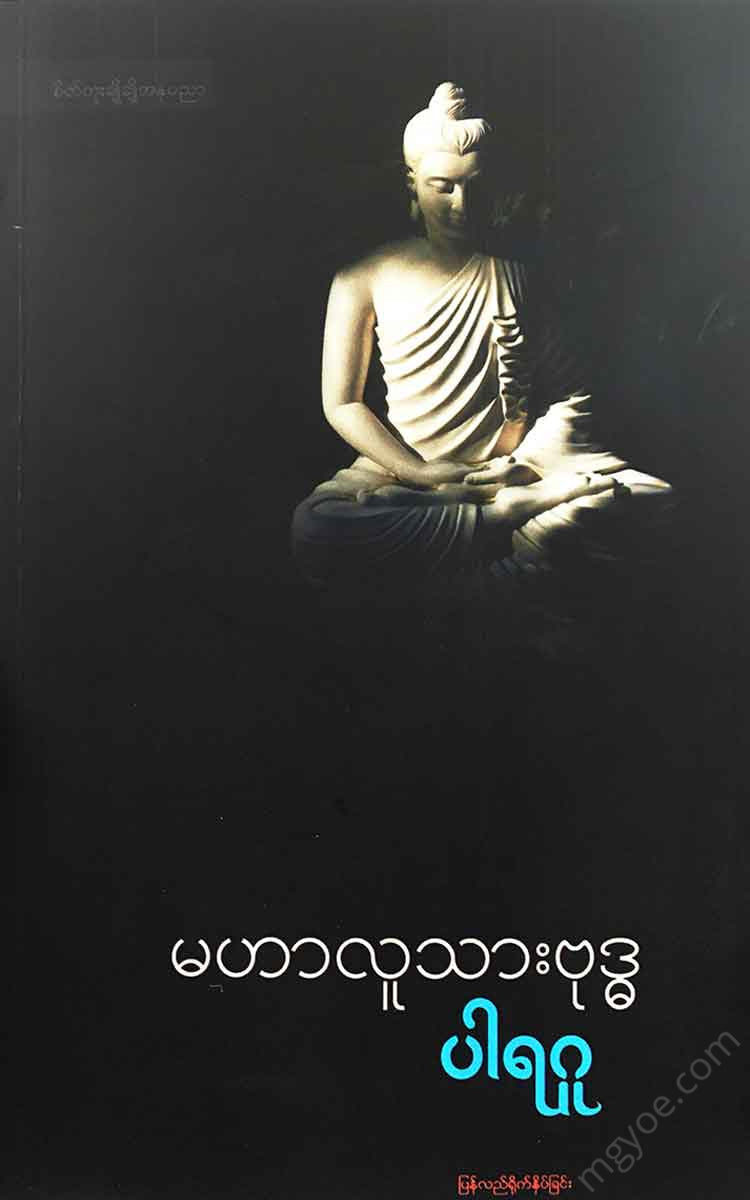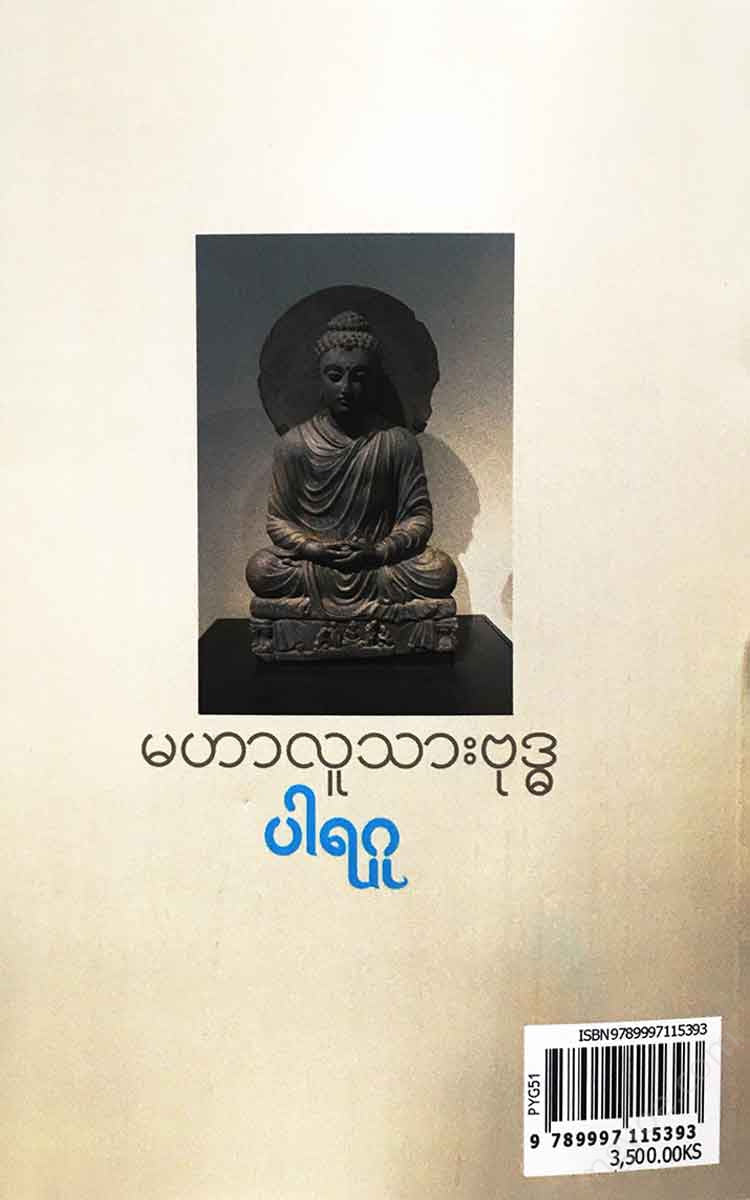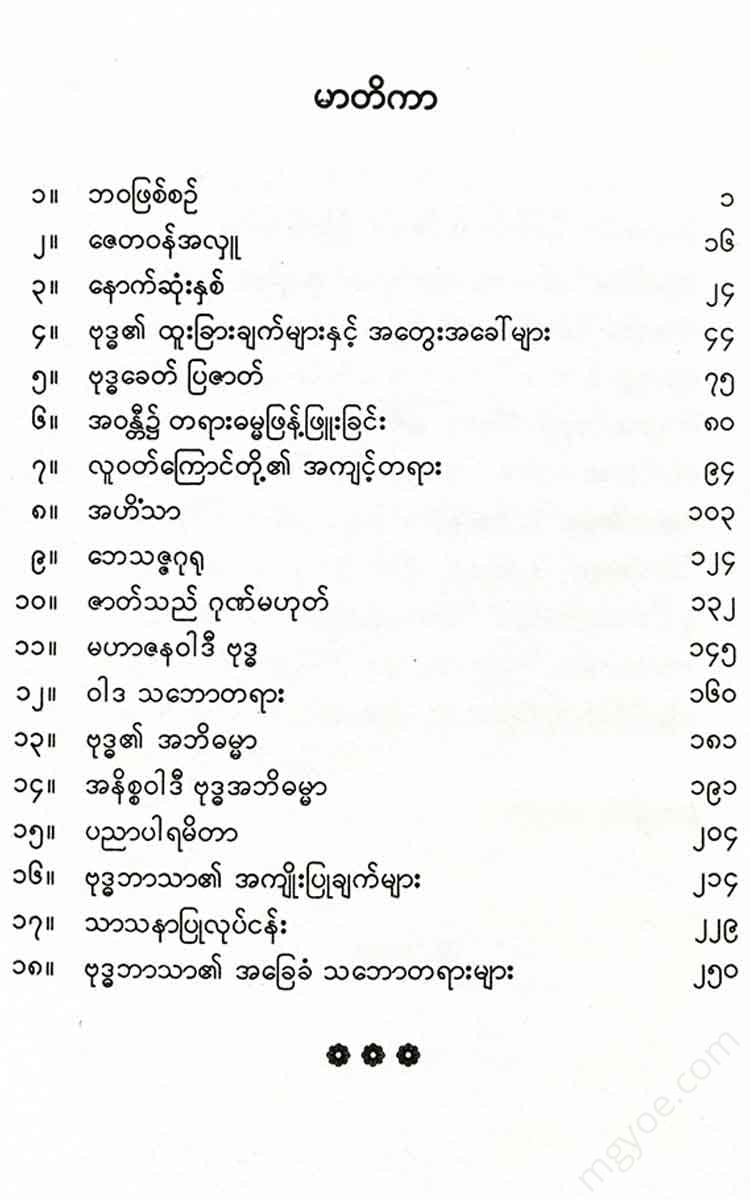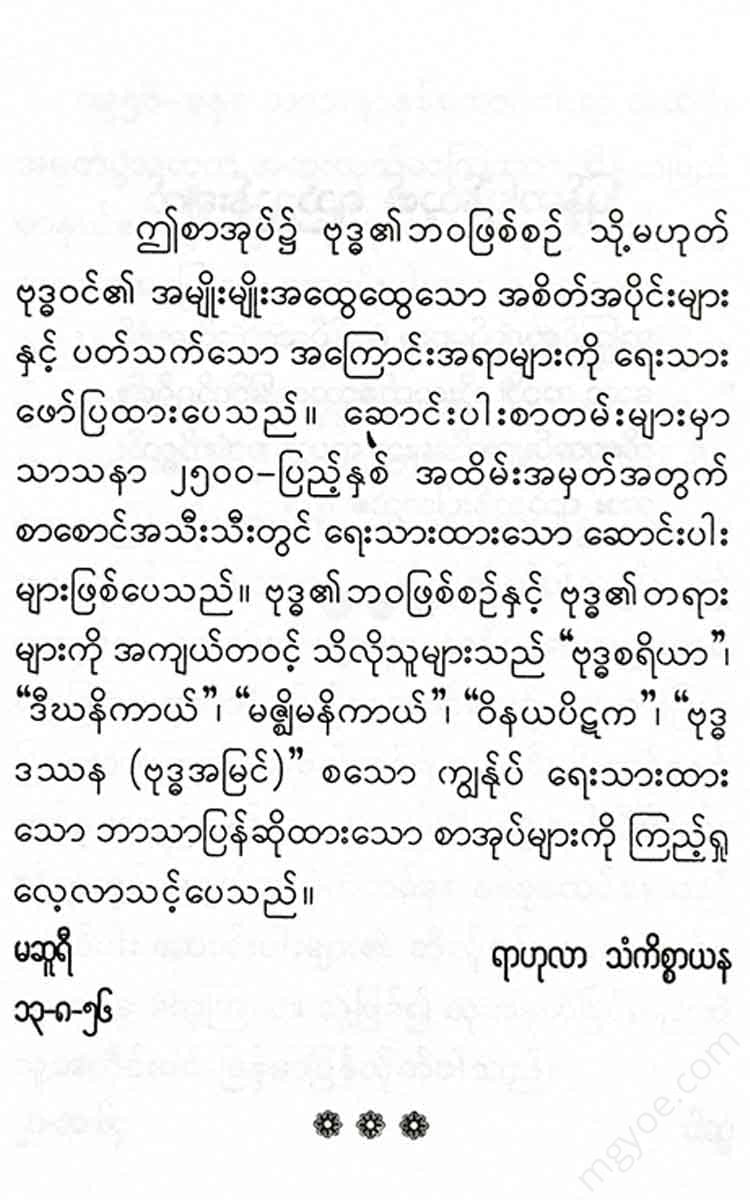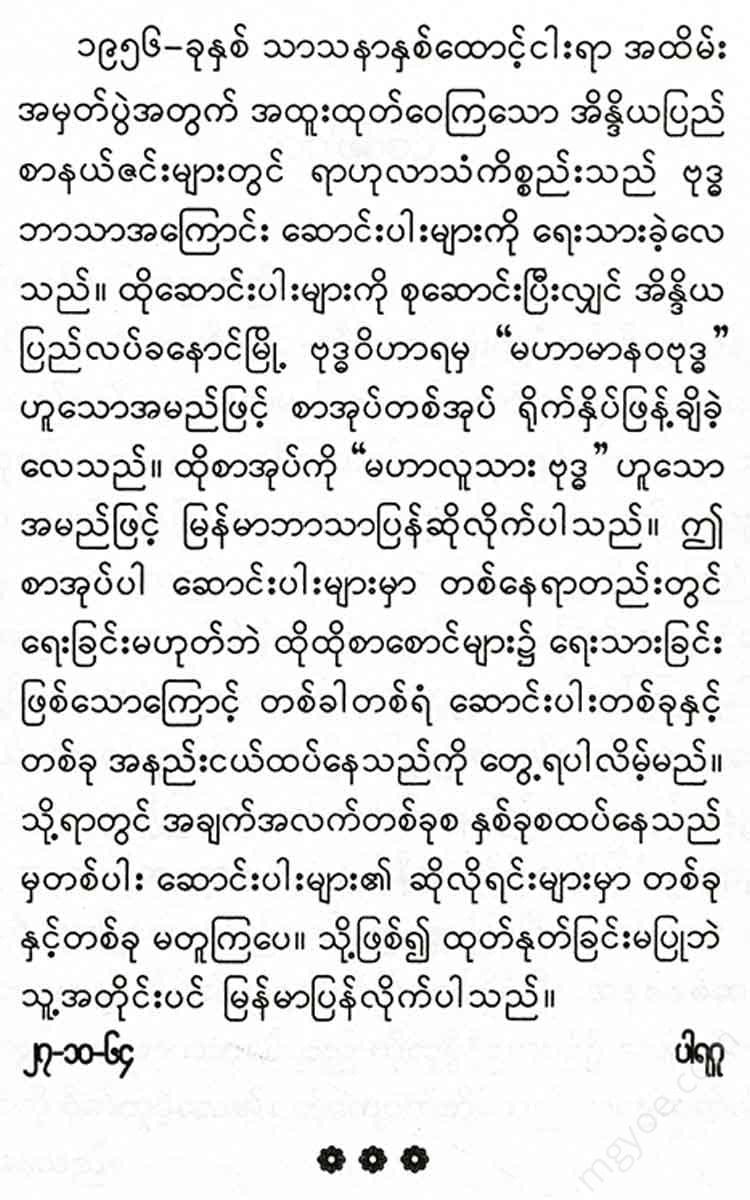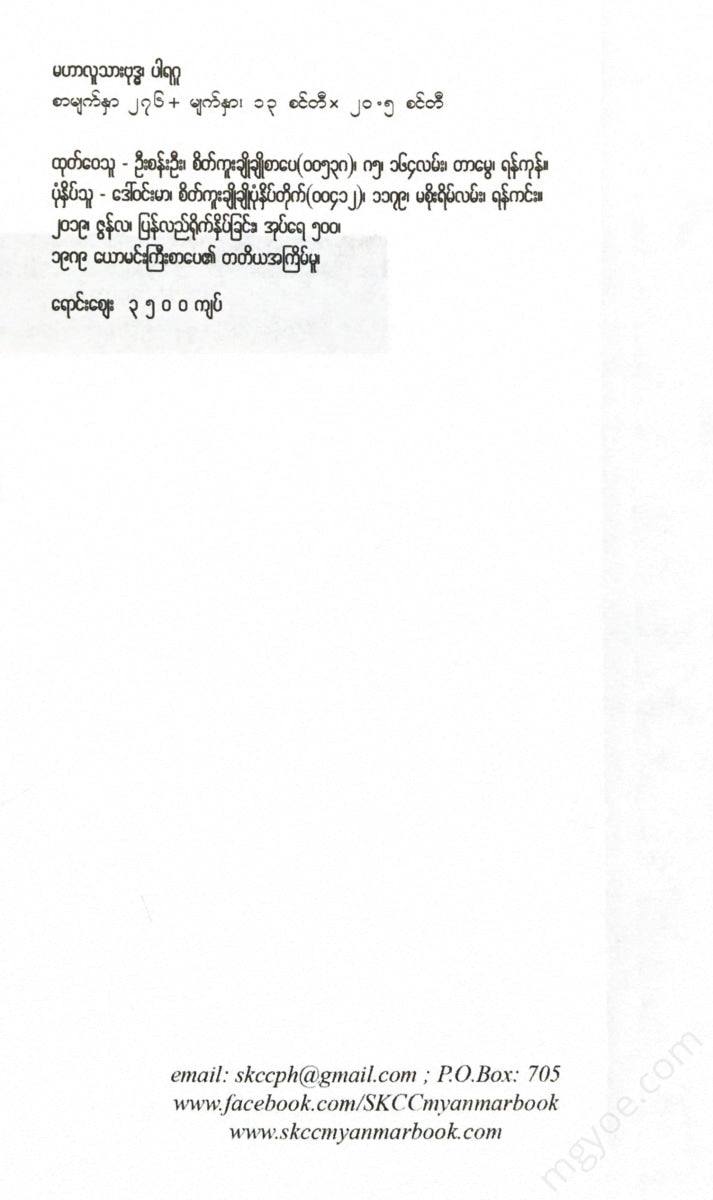စိတ်ကူးချိုချိုစာပေ
Guru - Great Human Buddha
Guru - Great Human Buddha
Couldn't load pickup availability
Life process
1. He left the palace.
Siddhartha Gautama was born in the city of Thamsinhāna around 563 BC. Siddhartha Gautama's father, Suddhodana, was called the king (raja) of the Sakyas. However, we know that along with Suddhodana, Bhaddiya and Dandapani were also called rajas. From this it can be inferred that the members of the Sakya's public governing body (senate or parliament) were called rajas, just like the members of the Licchavi clan. Siddhartha's mother, Maya Devi, was returning to her parents' village, a few miles from Kapikavattaw, when she gave birth to Siddhartha in a garden called Lumbini. 318 years after Siddhartha's birth, and twenty years after his coronation, Emperor Ashoka erected a pillar in the Lumbini gardens. The pillar still stands today.
A week after Siddhartha's birth, his mother died. His aunt and stepmother, Mahapajapati Gotami, took charge of raising Siddhartha. Seeing that Siddhartha was tired of the world and was wandering aimlessly, Suddhodana, who was deceived by the ascetics, was afraid that his son would go into the forest. So he married his daughter, Bhaddakasana (or Yasodhara), from the neighboring kingdom of Koliyagana (the people's government). Siddhartha regained his senses for a while. During this time, Siddhartha had a son. Siddhartha remembered the young boy as "Rahu" who had swallowed the moon, which was his active thought, and so he named him Rahula. He saw the old man, the sick man, the dead man, and the monk, and he became more and more tired of the human world, and one night he secretly fled from the palace. On this occasion, the Buddha himself spoke to Bodhirajakumara, the son of Uddayana, king of Vasa, at Kunara (Sushumaragiri).
(Majjima Nikaya, 2, 4, 4)
“Prince, before becoming a Buddha, I too could not attain happiness by being familiar with happiness, but I can attain happiness by being familiar with suffering.” Therefore, at a young age, young and dark-haired, and of good stature, while his parents were weeping and wailing, he withdrew from human society and entered the monkhood. … (First) he approached (the) Aarakama (the mother of) …”
The Kalama then taught him some methods of yoga (samadhi). However, Siddhartha was not satisfied. After leaving that place again, Siddhartha went to Udakaramaputta. There he learned some methods of yoga. However, Siddhartha was not satisfied. After that, he practiced yoga and abstinence for six years near Bodhgaya. The Buddha himself had spoken about this practice.
“My body has reached the peak of (weakness). My limbs have become like the branches of a tree that has been decaying for eighty years. ... My pelvis is like the legs of a camel. ... My spine is like a row of thorny branches. My ribs are like the hollows of a tree that has been decaying. ... My eyes are like stars in a deep well. ... My head is swollen like a bitter gourd that has been wrinkled by the wind and sun. My spine and intestines are completely stuck together because of such abstinence. If I get up to defecate, I will only go there. I fell on my face. When I rubbed my body with my hand to soothe it, the hairs that had fallen off my body fell out by the roots. “The venerable Gotama has a dark complexion,” people say. Some say, “The venerable Gotama has neither a dark complexion nor a bluish-brown complexion.” ... Some say, “The venerable Gotama has neither a dark complexion nor a bluish-brown complexion, but a catfish-colored complexion.”
They say, "My skin, which used to be so white and pure, is now ruined."
..... However, I did not attain that supreme insight by doing this. (At that time) the thought arose, "Is there any other way to attain enlightenment?" Then I remembered that I had once lived in the shade of a cool sycamore tree, while my father (Suddhodana) was plowing the fields, and had attained the first jhana. .. That first jhana would be the path to realizing the truth. However, it is not easy to attain that bliss with such a thin body. Then I ate coarse food, rice and lentils. At that time, five monks of the fifth rank were staying with me. ... When I ate coarse food, those five monks ... became disheartened and left ..."
Later, regarding the journey of life, the Buddha spoke elsewhere:
(Majjimanikyā 1, 3, 6)
“I saw a river flowing in a pleasant place, in a forest. The bank of that river was pleasant and clean. I thought that this was a suitable place for the development of meditation, so I sat down there. (Then) ... I realized the unwholesomeness of birth ... and attained an incomparable Nibbana. Insight arose in me. My mind’s liberation was no longer wavering. This life is final. There will be no more births...”
This is the insight of Siddhartha: suffering, the cause of suffering (samudaya), the cessation of suffering (niroda), the path to the cessation of suffering (magga), “Whatever dhammas (objects and phenomena) exist. Those dhammas arise because of causes. The Buddha explains about those dhammas. The Buddha also explains their cessation. With this view, he is a great ascetic…”
Siddhartha left the human world at the age of twenty-nine (534 BC). After six years of practicing the yoga practice of the Dukkara Sariya practice, through meditation and contemplation, he attained enlightenment at the age of thirty-five (528 BC). After that, the Buddha preached his Dhamma (Abhidhamma) for forty-five years and passed away at the age of eighty (483 BC) in Kusina.
2. Fundamental Law
After becoming a Buddha, the Buddha first resumed eating and understood that the five monks (the five-way monks) who had abandoned him, thinking that he had perished, were worthy of his knowledge and wisdom. After investigating, the Buddha arrived at the monastery of the five monks, Isipatana Migada (Sarnatha, Banaras). The Buddha's first final sermon was delivered to Gotama, who had given up fasting and resumed eating, in order to dispel doubts about the reason for the five-way monks' abandonment. The Buddha preached it. (Samyutta Nikaya-55, 2, 1)
“Monks, do not cling to these two extremes (the path of excess).
(1) Being attached to sensual pleasures -
(2) Physical exertion -
Leaving these two extremes, I have discovered the middle path. It gives insight. It gives knowledge. It gives peace. That (middle path) is this noble eightfold path. They are right view, right thought, right speech, right action, right livelihood, right effort, right mindfulness, and right concentration.
[1] The Four Noble Truths
We have already discussed suffering, the origin of suffering, the cessation of suffering, and the path leading to the cessation of suffering. These are the Noble Truths (the path to the cessation of suffering) that the Buddha proclaimed.
